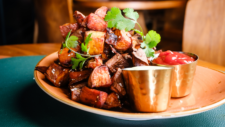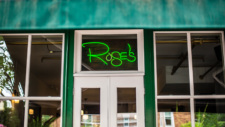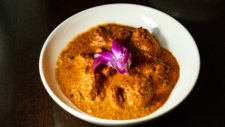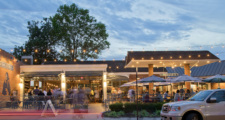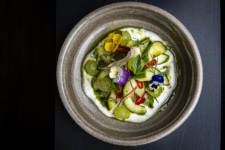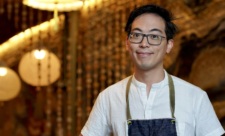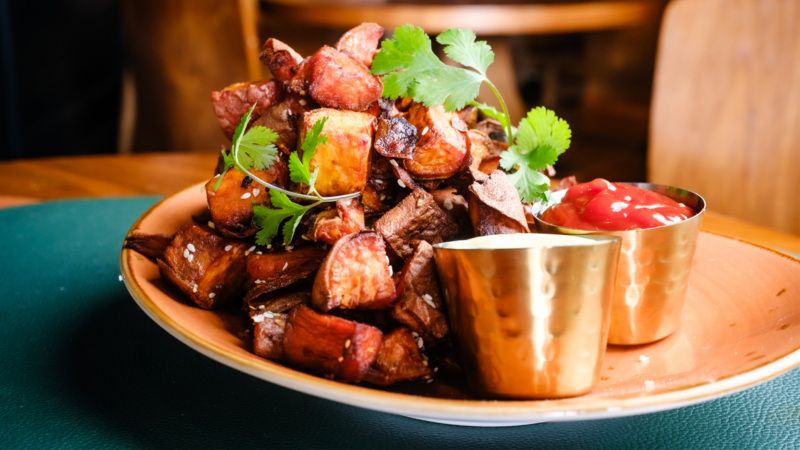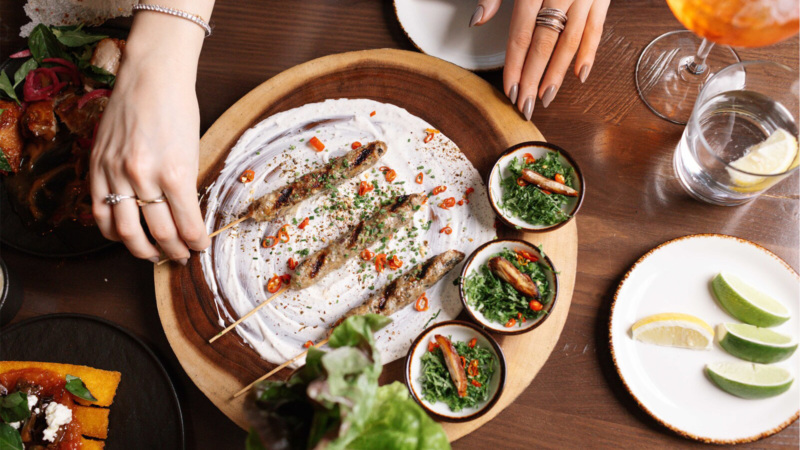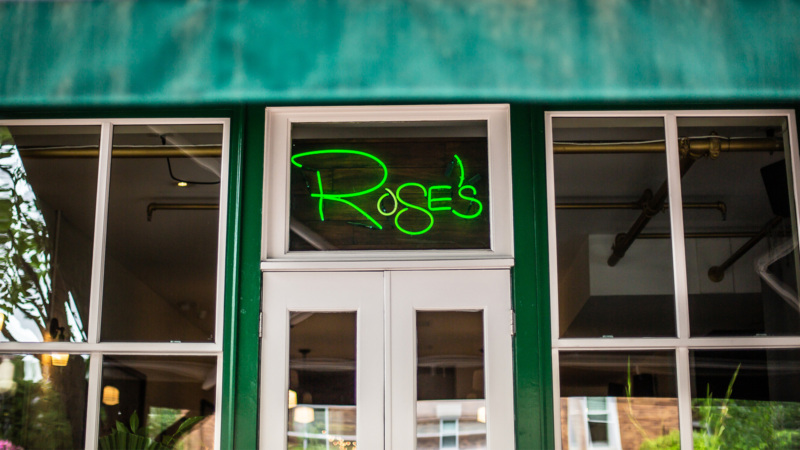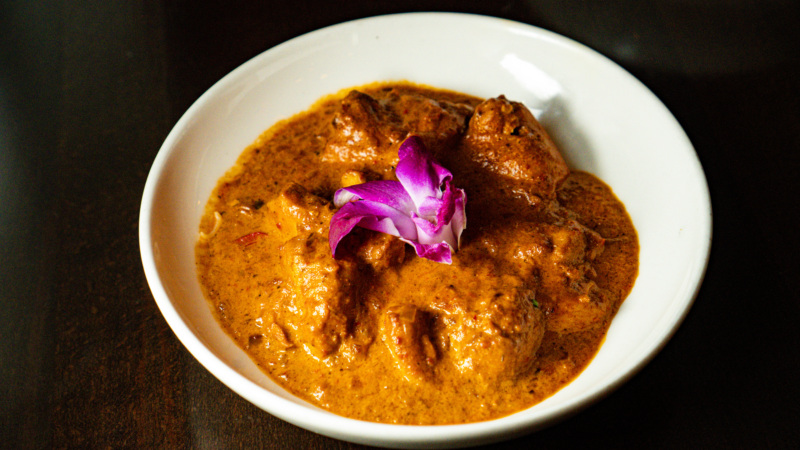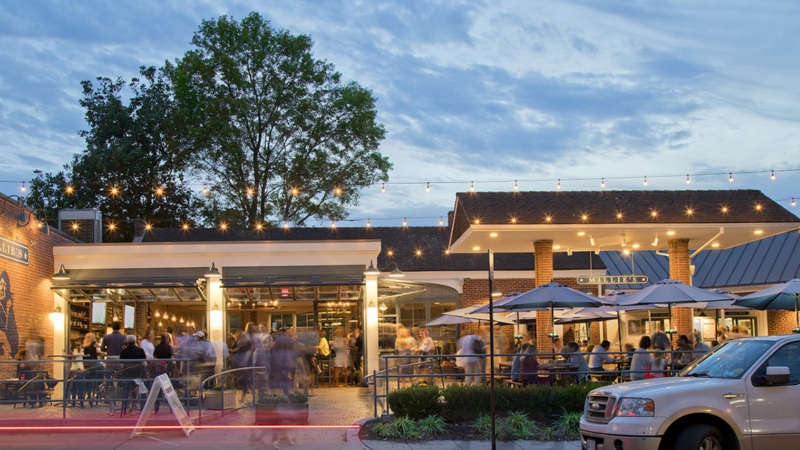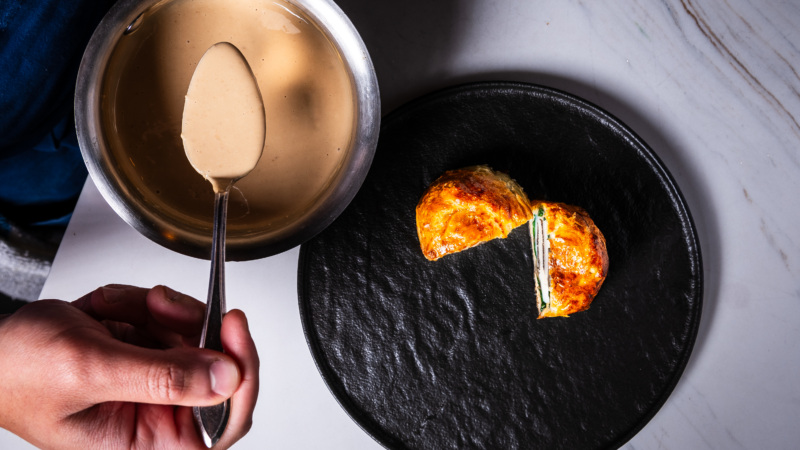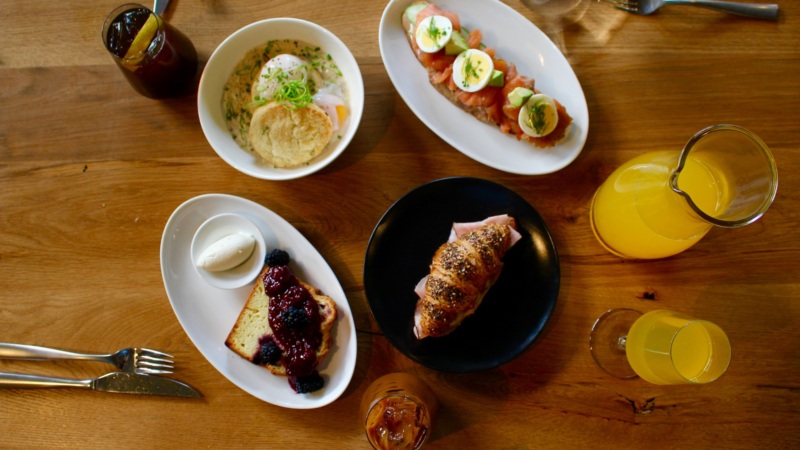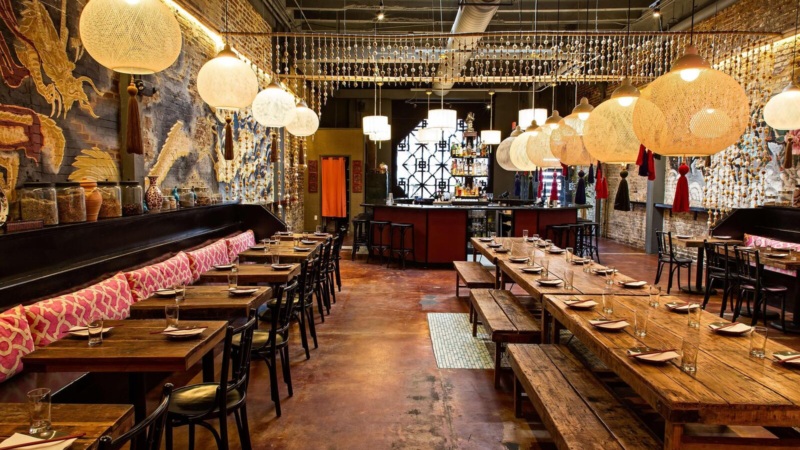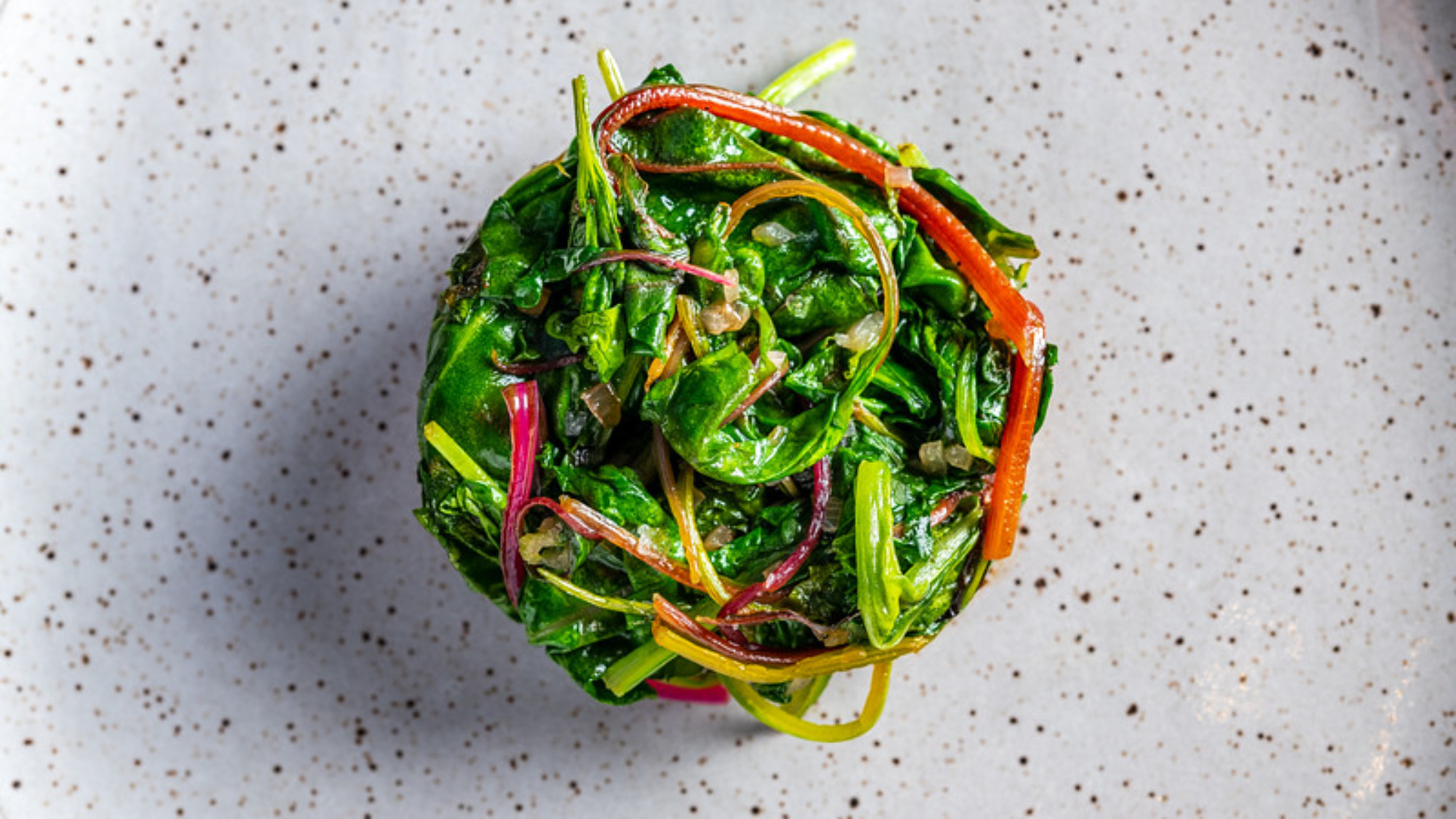
The One Who Keeps the Book Washington D.C.
How to Score a Table at Oyster Oyster
If there’s one coveted dinner in the nation’s capital, Oyster Oyster shoots to the top of the list. Diners at this Shaw establishment are treated to a fanciful journey of the Mid-Atlantic region on chef Rob Rubba’s vegetable-forward tasting menu. You’ll encounter oysters, both shucked bivalves and mushrooms, but also a smattering of locally sourced ingredients guaranteed to surprise, delight, and leave you in awe of the vegetable kingdom.
Since opening in 2021, Rubba and sommelier-restaurateur Max Kuller have shepherded a new vision for fine dining, one that prioritizes local and seasonal ingredients, a robust community of foragers, and the well-being of their employees. For their thoughtful efforts, they have been championed en masse. Last year, Oyster Oyster picked up a slew of accolades including Esquire’s Best New Restaurant award, a Food and Wine feature for Best New Chefs in America, a Michelin star, and most recently, a coveted James Beard award. No wonder it’s become a difficult table to snag.
Lucky for you, you’re reading The One Who Keeps The Book, our regular series that aims to answer the most important of questions: How do I get in? The first answer is Resy, of course. But every restaurant manages its tables differently and there are always tips, tricks, and shortcuts to be discovered. So here, we go straight to the source to get them for you.
At Oyster Oyster, general manager Tyler Mitchell holds all the secrets to this coveted book. Chef Rob Rubba also joins the conversation and offers his two cents on securing a table. As the two tell Resy, scoring a reservation at Oyster Oyster takes some planning. But with a little bit of attentiveness and Resy know-how, a table at this charming and sustainable restaurant can certainly be yours.
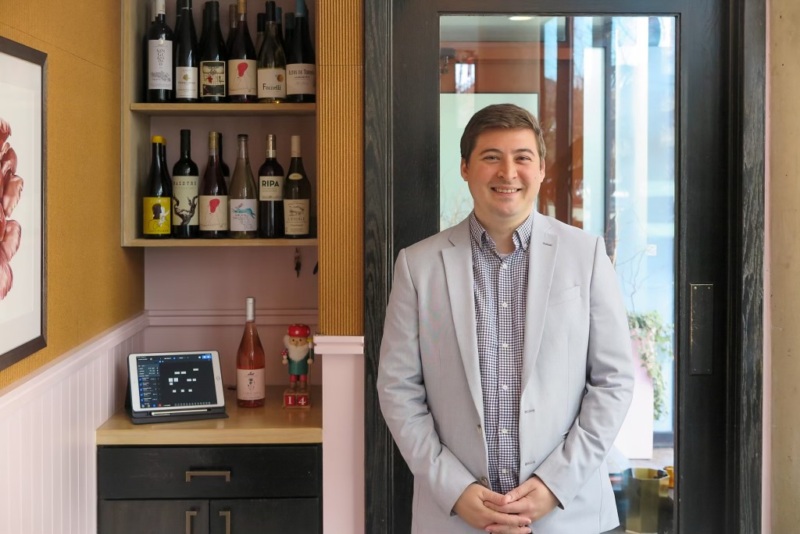

Resy: How many seats are there at Oyster Oyster?
Mitchell: We have 22 seats in the dining room and four seats at the chef’s counter.
What can someone expect at the chef’s counter versus a table?
Mitchell: Well, it’s a really great interactive experience. You’re being served by the chef team that is less than three feet from you. You see them preparing each dish the whole meal and then it’s finally your turn to receive the dish. The chefs walk up and explain what they’ve been doing all night and give you the story behind the dish.
When do reservations drop on Resy?
Mitchell: So we release reservations per menu. There are four to five hard menu changes a year, one per season.
Can you explain the menu themes? Do they change every year?
Rubba: You know, it depends. There’s nothing dogmatic here and we’re always evolving. So if we find another term that defines the season a little bit better as we progress in the restaurant, they can change, and they have changed since we’ve opened. But we’re sticking with a few of the same from last year.
What’s the next time that people can book reservations, after your spring reservation drop?
Rubba: Mid-June will be our solstice menu. And that will be our summer menu until early September.
And when will those reservations be released?
Rubba: Generally a month before the season starts. So in that case, we would be releasing them mid-May or at the latest early June.
And do you do that over the phone or is it Resy only?
Mitchell: Resy only.
Rubba: I mean, we’re not just saying that because we have to. It’s actually just on Resy.
What You Need to Know

Plan Ahead: Reservations drop at 10 a.m., one month before the start of a new season.
The Layout: There are 22 seats in the dining room and four seats at the chef’s table. Whether you’re on the lower level or the upper level, every table has a view of the kitchen.
Walk On In: There are no walk-ins. All reservations happen through Resy.

Must-Orders: The tasting menu, which rotates four to five times a year and includes vegetarian or vegan adjustments with advance notice. Their wine list is phenomenal too.
Pro Tip: Every reservation has a 72-hour cancellation window, so put yourself on the Notify list and be on the lookout then to score a last-minute table.
How do you explain your rotation of menus to diners?
Rubba: The whole restaurant’s rooted in sustainability and our local food systems, so each category highlights that season. We’re going into our vernal menu right now, which is the feeling of spring, the lightness of spring. So we’re really embracing what spring feels and means. It’s a lot of light, leafy greens, and bright new flavors. Even our cooking style will reflect that season. So as we progress each season, it’s basically a celebration of our local farmers. We just got through our Cellar|Larder season, where we’re celebrating root vegetables and a bunch of preserved and fermented ingredients we made over the summer and spring and utilized what’s available to us.
Would a diner — who might want to dine twice in one season — expect something different about the service or the menu, or is it kept consistent?
Rubba: It’s always evolving. We have a joke that it changes every day, but that’s a small micro-seasonal ingredient that might fade in and out. Especially this time of year, we might start with an ingredient that’s in its adolescence. It’s just like a very young sprout. But by the time we get to the end of season, it’s a full-grown ingredient so the dish itself has evolved. As you dine through even a season with us, you’ll see pretty drastic changes from the first week to the last week.
Mitchell: The first week and the last week are kind of like the crossfader of the seasons. Where there’s a little bit of winter still happening and a little bit of spring. And then you’ll have a little bit of spring fading into the summer.
How quickly do the reservations get booked out? Any specific days in particular?
Mitchell: The reservations fill up pretty quick, regardless of the day of the week. Like I said, we just have the 22 seats plus four at the kitchen counter, so they book fast. You have a chance on the day we drop reservations to get any day you really like. But within hours those might be gone, especially for Friday and Saturday.
Do you ever hold seats for walk-ins?
Mitchell: No. To reflect what chef Rubba said, everything about the restaurant is rooted in sustainability. When the chefs get in, they know that we’ve had 44 reservations that day and they start preparing for 44 covers.
How many seatings do you have?
Mitchell: There are two seatings, and this is really great for our staff. We do the first turn from 5:30 p.m. to 6:15 p.m. seated, and then we get a little halftime. When we have a little bit of a lull, we can fix anything that might have happened in the first turn or adjust anything that needs to be adjusted. And it’s also a good mental break to sit up and really be fresh for the second turn as well.
How long is your Resy Notify list on average, based on your past season?
Mitchell: I would say it’s between 30 to 80 reservations looking to get in, per night. Adding up to between 150 to 300 people.
Rubba: On Friday nights, 240 guests are on the Notify list, easily.
Mitchell: And [Resy] is a great tool for people to get in. We’ve seen a lot of success. People come in and say, I’ve been trying to get a reservation months ahead, but I finally got a text on Wednesday saying I could get in right now.
If someone were to set a notification for Oyster Oyster is there a certain day, they’d be most likely to get their reservation?
Mitchell: We have a 72-hour cancellation window for reservations. And Resy sends emails reminding people of that. So 72 hours is the last chance they can cancel or not. And that’s a good time to be watching your phone for the Notify list.
Is there any other way to snag a table?
Mitchell: Everything is through Resy.
Rubba: You can message us on Instagram if something opens up. That’s about it.
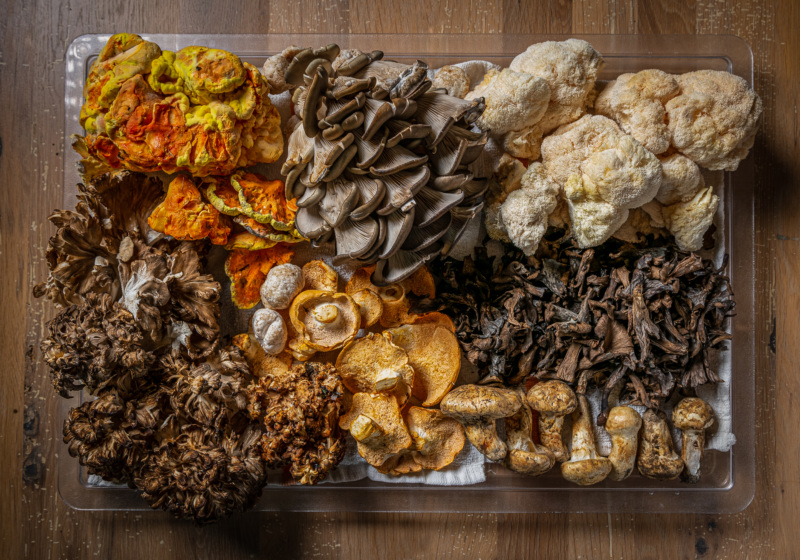

Can you share a good story that’s gone down at the door?
Rubba: Here’s a crazy example of hospitality and how amazing Tyler is. I’m going to tell you a story. We had this older couple come in to celebrate their anniversary, and then just as they’re coming in, we had this torrential downpour and the gentleman was soaked and the wife asked Tyler if they could have his dress shirt. It was a white shirt as well. And Tyler gave the man his shirt so he could wear a nice warm shirt for dinner. Luckily, Tyler wears a sports coat as well, so he was wearing a t-shirt and a sports coat. This gentleman was able to enjoy his 50th-anniversary dinner with his wife in a warm shirt. A few weeks later, they brought it back laundered to him.
Wow, I did not expect that. That’s the best story ever. Tyler, can you confirm?
Mitchell: Can confirm.
What time does the dining room open?
Mitchell: 5:30 p.m. is when we unlock the doors for the first reservations.
And if people arrive earlier than that, are they expected to wait outside?
Mitchell: Yeah, this is D.C., people arrive on time if not after the time. We’re opening a little spot next to the front door. That’s going to be a really cool spot, a really cool bar for drinking natural wine and playing some pinball. And that will be open maybe 30 minutes before we unlock the door for the dining room.
When will that open?
Mitchell: ASAP.
Especially this time of year, we might start with an ingredient that’s in its adolescence. It’s just like a very young sprout. But by the time we get to the end of season, it’s a full-grown ingredient so the dish itself has evolved.— Rob Rubba, Oyster Oyster
What’s a typical party size?
Mitchell: Mostly two-tops. We seat up to four, but we only have three tables that seat four people. And we only have five tables that seat two people. And so typical table size would be two.
Have people done more than that or is it really kind of impossible?
Mitchell: You know, it’s not the service we want to provide. It’s very interactive and with more than four people you just end up interrupting their own conversations. And that’s not what we want to give them.
You did mention the chef’s counter. But in your opinion, what’s the best seat in the house?
Mitchell: Every seat that has food coming from the kitchen is the best seat in the house.
Rubba: The upper level of six tables sits about two and a half, three feet above the lower level. So the opera seating of being able to see the kitchen, it’s a very cozy dining room. I mean the entire restaurant is about 1,200 square feet. With every seat, you can see everything. We don’t want to have a bad seat in the restaurant. And honestly, every seat kind of has its own charm. You know, sitting at the counter, you get to see everything up close and interact with the kitchen scene, as well as sitting at a table set and you have a view outside up against the window and a breadth view of the kitchen and the whole service team. So they all have their own little charms for sure.
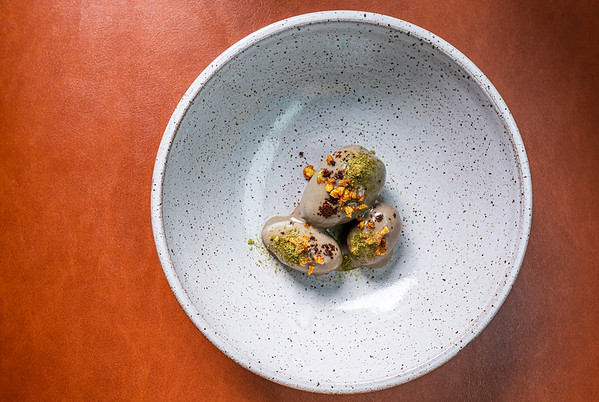

What’s your favorite time of the day at the restaurant?
Rubba: When no one’s here. [laughter]
Mitchell: I would say my favorite time of day is — it’s not a time of day, it’s a time of year. We’re kind of getting into that time of year where it’s the beginning of springtime, and the sun hasn’t gone down yet while we welcome the first guest in.
Can you set the scene for 7 p.m. on a Friday night?
Mitchell: The people are the first guests that arrived at 5:30 p.m. and start to get into the final savory and dessert course. Some people are just settling in. The wine has started to open up and the dining room is full but it’s never rambunctious.
Do you have any favorite finishing touches in the restaurant, like décor or things laying around?
Mitchell: We’ve done away with single-use containers for all beer and wine. We finally got away with single-use birthday candles burning carbon. We found these small little crystal mushrooms for celebrating your birthday with Oyster Oyster. We present a little bowl. You get to pick this little porcelain mushroom and I think it’s a nicer touch than a birthday candle. The birthday candle blows out and it’s done. The little porcelain mushroom that you take home, you might find that in a drawer or on a coffee table and it gets over a year or a few years later and you’re going to remember the meal from Oyster Oyster.
Who makes up the front-of-house team?
Mitchell: You have myself. We have three captains and a host. And the kitchen does a whole lot of the food running themselves. Because it’s an open kitchen, the show doesn’t come from the server and the food doesn’t come from a backroom. It’s all-inclusive.
When did you join the Oyster Oyster team?
Mitchell: It’s actually one year. Next week.
Wow, congrats! What drew you in from your first dinner at Oyster Oyster, when you sat down as a customer?
Mitchell: That meal was inspiring. Working for a company that believes in the health and sustainability of their own employees. We’re closed Sunday and Monday. We will never have to work a brunch shift, and thank God. Yeah, you can put that in bold. We will never work a brunch shift. It was inspiring to see a meal that was truly local, it’s just different. And what we’re doing is local seasonal, and I was really inspired at the end of that meal. It made me really want to jump in.
Is there a personal favorite on the menu right now?
Mitchell: The more I think about this question, the more impossible it is to answer. No dish repeats. And as chef [Rubba] mentioned earlier, the ingredients change over the course of the season. Your ramp might just be a shoot barely above the ground right now, but in four weeks it might be a full-grown ramp. That’s with every season. Melons can be more tart at the start of the season and sweeter at the end of the season. One exciting thing that we do is source from so many local foragers. So what might be the most interesting ingredient on the menu would be from our local foragers. But again, that can be multiple dishes every night. So the more I think of the question, the more impossible it is to answer.
Is it the same for the drink menu, too? Does it change every season?
Mitchell: Yeah, the drinks have to match. We look for forward-thinking winemakers. We look for local producers who actually use local ingredients. I love different wines different times of the year and different ones with different weather. So the beverage has to be curated to the needs of the people.
For someone who doesn’t live in D.C., what’s the best way to support a restaurant like Oyster Oyster?
Mitchell: We get a lot of international and domestic visitors, and D.C. diners alike. And Resy really is the easiest way to make that happen. I would hate for somebody to get in line at 4 p.m. to get into a restaurant and be told that there just isn’t space that night. We only have a few tables so we make sure they’re all available on Resy.
Looking ahead, what are you most excited about for this coming year?
Mitchell: It’s springtime. It’s the rebirth of everything. Everything is new. Everything is packed again. The sun stays out longer. That’s what I’m excited for.
Jess Eng is a food and culture writer. She regularly contributes to the Washington Post, Epicurious, Resy, Atlas Obscura, and more, and has collaborated with podcasts like Racist Sandwich and the Southern Foodways Alliance’s Gravy. Follow her on Twitter and Instagram. Follow Resy, too.










